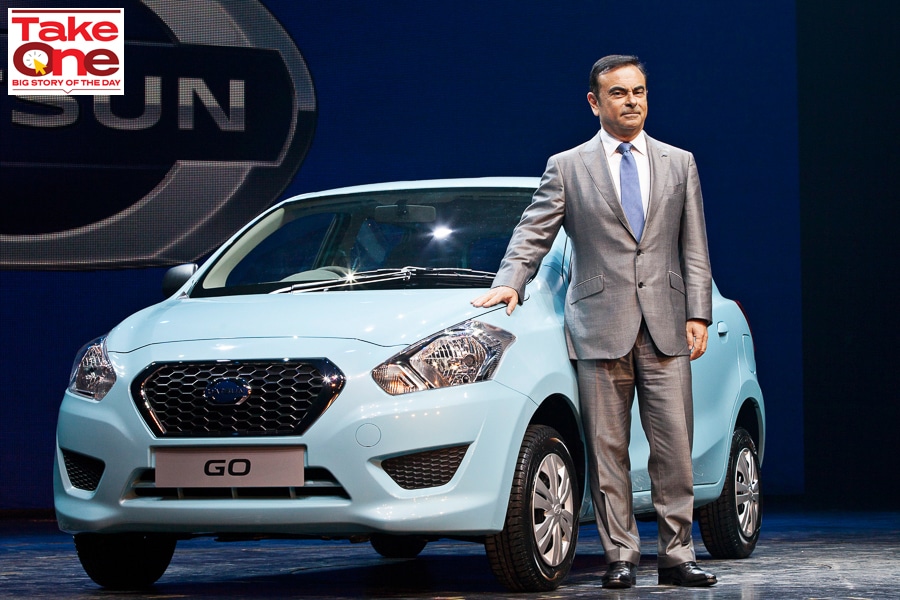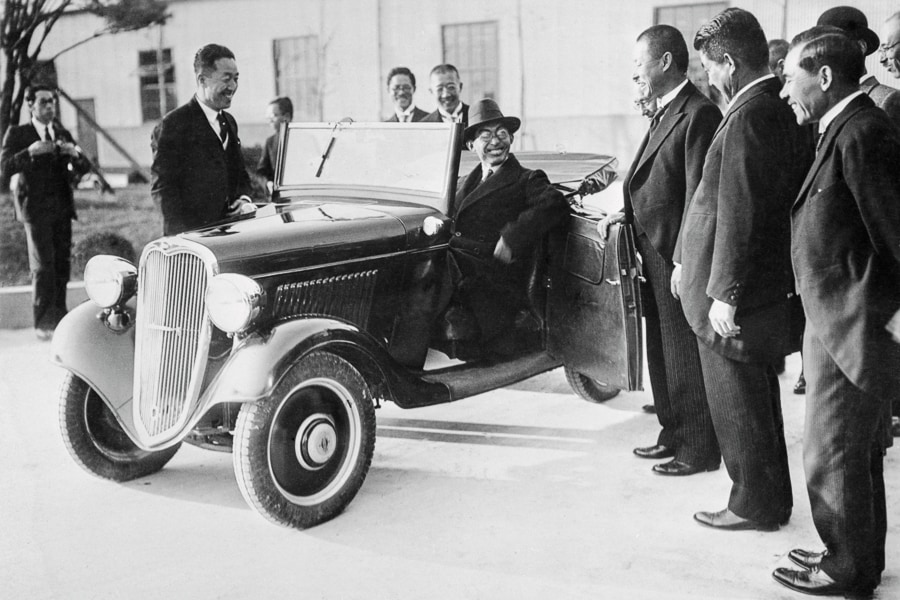
How Datsun tried to capture the Indian market before finally bowing out
With Datsun redi-GO's production ceasing at the Chennai plant, Datsun's second lease of life in the country has come to a halt. Experts say they focussed so much on the price that they misjudged the market
 A file photo of Carlos Ghosn, CEO of Nissan Motor Co., with the company's new Datsun Go vehicle at a media event in Gurgaon, India, July 15, 2013. Nissan unveiled its first model under the revived Datsun brand, a five-door hatchback, targeted at weaning budget buyers from Maruti Suzuki India Ltd. and Hyundai Motor Co. in Asia’s third-biggest car market.
Image: Prashanth Vishwanathan/Bloomberg via Getty Images
A file photo of Carlos Ghosn, CEO of Nissan Motor Co., with the company's new Datsun Go vehicle at a media event in Gurgaon, India, July 15, 2013. Nissan unveiled its first model under the revived Datsun brand, a five-door hatchback, targeted at weaning budget buyers from Maruti Suzuki India Ltd. and Hyundai Motor Co. in Asia’s third-biggest car market.
Image: Prashanth Vishwanathan/Bloomberg via Getty Images
Nissan has had a phenomenal year-and-a-half. Through the course of 2021, the company rediscovered the Indian market and saw its sales nearly triple—from 12,297 vehicles in FY21 to 33,684 cars in FY22. Much of that is thanks to the company’s recent launch, the Nissan Magnite, a compact SUV that had set the booking charts on fire and garnered bookings of over one lakh vehicles to date. Today, the company sells two SUVs, the Magnite and the Kicks, a mid-sized SUV, apart from its globally admired GT-R.
However, long before the company managed a turnaround in its fortunes, it had tried to capture the Indian market using the Datsun brand—launched with much fanfare in 2014. A low-cost vehicle meant for emerging markets, the brand was revived after two decades to capitalise on the small-car boom in India. The company had launched its entry-level car, Datsun Go, priced between Rs3.12 lakh and Rs3.7 lakh in the country.
At that time, Carlos Ghosn, the then-CEO of the Renault-Nissan alliance had said that the plan for Nissan was to target 10 percent of the Indian car market by 2016 from 1.3 percent then, and Datsun was key to that. “By 2016, we expect 50 percent of all auto sales to take place in high growth markets. To put the global markets in perspective, in the US, there are about 800 cars per 1, 000 residents, among mature European markets, it is around 500, in Russia, the rate of ownership is 280, in South Africa it is 160, in Indonesia it is 70 and in India, it is 15,” Ghosn said. “We see a significant opportunity in these growth markets where demand for cars is increasing and will continue to increase.”
But that wasn’t the case to be. Eight years later, on April 20, Nissan pulled the plug on the brand. “Production of Datsun redi-GO has ceased at the Chennai plant (Renault Nissan Automotive India Private Ltd),” a spokesperson for Nissan India said in a statement. “Sales of the model continue. We can reassure all existing and future Datsun owners that customer satisfaction remains our priority, and we will continue to provide the highest levels of aftersales service, parts availability, and warranty support from our national dealership network.”
Nissan’s decision to pull out Datsun from the Indian market comes a few months after Ford decided to pull the plug on the Indian market. “As part of its global transformation strategy, Nissan is focusing on core models and segments that bring the most benefit to customers, dealer partners, and the business,” Nissan says. “In India, this includes the all-new, locally-produced Nissan Magnite with over 100,000 customer orders to date.”









